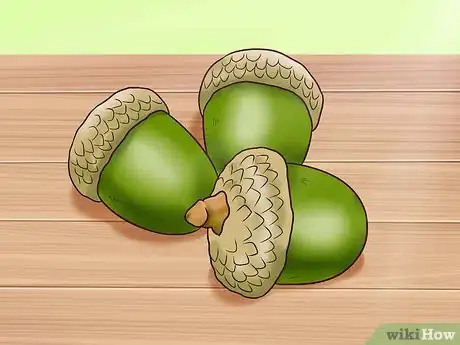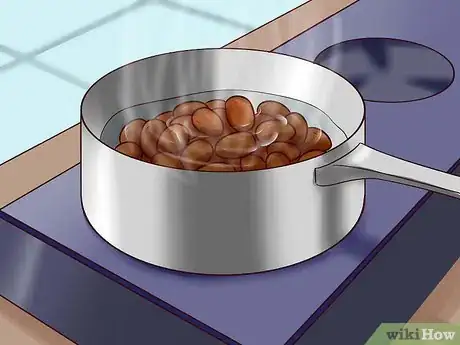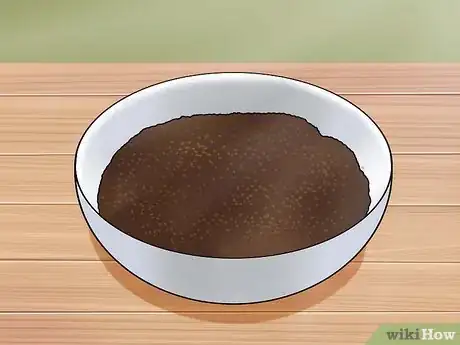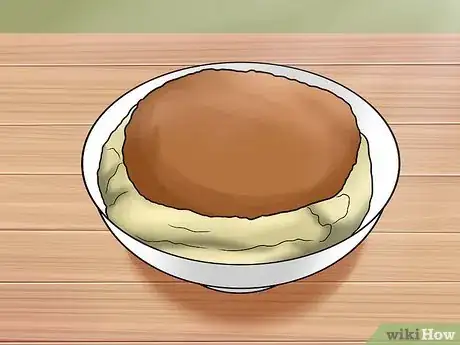wikiHow is a “wiki,” similar to Wikipedia, which means that many of our articles are co-written by multiple authors. To create this article, 11 people, some anonymous, worked to edit and improve it over time.
wikiHow marks an article as reader-approved once it receives enough positive feedback. This article received 23 testimonials and 96% of readers who voted found it helpful, earning it our reader-approved status.
This article has been viewed 475,739 times.
Learn more...
Like many other true nuts, acorns are an excellent source of food, and they provided people with a wealth of health and food recipe ideas in earlier times. Today, they're still in fashion as a food, and rightly so, because they're filled with B vitamins, protein, little fat, and they're a decent complex carbohydrate, and are good for controlling blood sugar levels.[1] Every species of acorn is edible, but some taste better than others. However, it is very important you do not eat them raw; in order to not eat acorns that are bitter-tasting and toxic, you'll need to process them first. Here are directions and some suggestions about how to use acorns as food.
Steps
Processing Acorns to Eat
-
1Gather your ripe acorns. Look for and only use brown acorns, as these are ripe; green acorns are unripe and are unsuitable for eating (but mature green acorns can ripen in a clean, dry place). Avoid any acorns that appear mildewed, dusty, blackened, etc. Quality nutmeat will be yellowish in colour.[2] Unprocessed, natural nuts of various kinds of oaks:
- White oaks produce bland tasting acorns. The best for harvesting are the swamp white oak, Oregon white oak, and the burr oak.[3] Generally, these won't need leaching.
- Red oaks produce bitter tasting acorns.
- The Emory oak's acorns are mild enough to not require processing.[4]
- Black oaks produce very bitter tasting acorns and need a lot of leaching to overcome this.
-
2Leach the acorns of tannins. Untreated raw acorns contain high concentrations of tannic acid, causing their taste to be bitter and them to be toxic to humans if eaten in large quantities.[5] It is possible to remove the tannic acid by simply leaching it out of acorns in a pot of boiling water,[6] pouring out the hot water and having repeated changes of water. Continue doing this until the water does not turn brown after you have strained and replaced it.
- Another method for leaching: place one tablespoon of baking soda into one litre of water. Leave the acorns to soak in the baking soda infused water for 12-15 hours.
- A Native American or rustic method is bagging the nuts and allowing them to soak in a clean, flowing stream for a few days until no brown-colored water is seen when checking their progress.[7]
Advertisement -
3Remove the acorns once leached and leave to simply dry or to make roasted nuts after drying, as desired. Raw acorns can be stored for months without spoiling; this dramatically increases their value, being a "process as needed food resource", however, they must be dry or otherwise they can get moldy and mildewed. But only when leached are they ready to use.
Using Acorns in Recipes
-
1Make acorn "coffee". Peel the ripe, processed acorns. Divide the kernels. Place in an ovenproof dish and cover. Roast in a low heat oven to dry slowly. Once roasted (light, medium or dark), grind. The resulting mixture can be blended into commercial coffee -- or used on its own to make acorn coffee.
-
2Make acorn flour, whole -- or sift to remove fiber to make a finer cake flour called acorn starch! Read How to make acorn flour for instructions. Use the flour to make breads, muffins, etc.
- Korean cooking is largely the only cuisine that features acorn starch. Some Korean noodles and jellies are made of acorn starch. As acorn starch is a favorite part of this cuisine, many Asian grocery markets sell it.[8]
-
3Pickle the leached acorns in brine. Use an olive making recipe and substitute acorns for the olives to make a treat/delicacy.
-
4Substitute roasted acorns for nuts and cooked legumes. They can replace many legumes and other nuts, such as chickpeas, peanuts, macadamias, etc. Follow your usual recipe and substitute acorn pieces instead. Like most nuts, they are a nutritious, dense food to use freely.
- Make acorn dukkah, a dry spicy mixed dip, which has many uses, but is mainly used to dip bread that has been basted with olive oil or butter.
- Sprinkle chopped, roasted acorns over a fresh salad.
-
5Roast the acorns. Once roasted, remove and dip in very heavy sugar syrup.
- Make "acorn brittle" candy, using a peanut brittle recipe, and spread it on buttered plates to cool.
- Make an acorn nut butter spread that is similar to peanut, almond, hazelnut, or sunflower seed nut butter.
- Use recipes for low-carb pancakes (as crepes) or low-carb biscuits of acorn starch. Spread with acorn butter and add stevia!
-
6Add acorns to stews as one might add beans or potatoes. Their nutty, slightly sweet taste adds a lovely depth to stews.
-
7Add ground acorns to creamed, mashed potatoes or potato salad. This can give these standards a nice lift in flavour, adding "conversation-piece" value.
Community Q&A
-
QuestionHow do you do it the old-fashioned way, with a fire?
 Community AnswerPut your cleaned acorns in a dry frying pan, which should be big enough to fit all the acorns in one layer on the bottom. Sprinkle the acorns with salt, depending on your taste. Hold the frying pan over an open fire, and constantly move the frying pan around. When the acorns start to smell roasted (not burned), take them off the fire and eat them like you would any roasted nut.
Community AnswerPut your cleaned acorns in a dry frying pan, which should be big enough to fit all the acorns in one layer on the bottom. Sprinkle the acorns with salt, depending on your taste. Hold the frying pan over an open fire, and constantly move the frying pan around. When the acorns start to smell roasted (not burned), take them off the fire and eat them like you would any roasted nut. -
QuestionWhat is the easiest way to remove the shell from the acorn?
 Community AnswerI used a garlic press to break the shell, then removed the shell. You can use a nut cracker too.
Community AnswerI used a garlic press to break the shell, then removed the shell. You can use a nut cracker too. -
QuestionDo I shell the acorns before roasting?
 Community AnswerYes, for all of the suggestions here (despite the photos), you should remove the shells beforehand.
Community AnswerYes, for all of the suggestions here (despite the photos), you should remove the shells beforehand.
Warnings
- Holes indicate worm infestations and blackened or dusty-looking/mildewy acorns should be avoided.⧼thumbs_response⧽
- To collect only good, sound acorns: sit under the tree like the Native Americans, picking up acorns, making sure to put holey ones into a trash container, or you will be picking them up again. And again... Keep the acorns of one tree (or at least one kind of oak tree) separate from other kinds. When you are done gathering, pitch the acorns into a bucket of water and skim off anything that floats. Put the skimmings into your compost; or better yet, dry and burn them since many of the floaters contain worms that are working on burrowing their way out; this is why they float. Fewer worms mean fewer adults to lay eggs and more edible acorns! The acorns that do not float are good. If they are green, keep them in a dry, shaded place until they turn brown.⧼thumbs_response⧽
Things You'll Need
- Hot water
- Leaching containers
- Roaster, oven
- Grinder
References
- ↑ Jackie Clay, Harvesting the Wild, http://www.backwoodshome.com/articles2/clay79.html
- ↑ Jackie Clay, Harvesting the Wild, http://www.backwoodshome.com/articles2/clay79.html
- ↑ Jackie Clay, Harvesting the Wild, http://www.backwoodshome.com/articles2/clay79.html
- ↑ Jackie Clay, Harvesting the Wild, http://www.backwoodshome.com/articles2/clay79.html
- ↑ http://www.wisegeek.org/can-people-eat-acorns.htm
- ↑ Jackie Clay, Harvesting the Wild, http://www.backwoodshome.com/articles2/clay79.html
- ↑ http://www.wisegeek.org/can-people-eat-acorns.htm
- ↑ http://www.wisegeek.org/can-people-eat-acorns.htm
- ↑ Jackie Clay, Harvesting the Wild, http://www.backwoodshome.com/articles2/clay79.html
- ↑ http://www.wisegeek.org/can-people-eat-acorns.htm
- Food from the oak, Growing Today, December 1994, pp. 20-21 – research source
About This Article
To use acorns for food, start by gathering some ripe, brown acorns and bringing them to a boil in a pot of water to leach out the tannins in them, which are toxic to humans. Keep changing out the water until it no longer turns brown. Then, remove the acorns from the water and let them dry before cooking with them. To cook with acorns, try using them in place of nuts or cooked legumes or adding them to mashed potatoes or stew. To learn how to make other recipes using acorns, scroll down!
































































